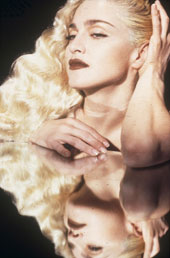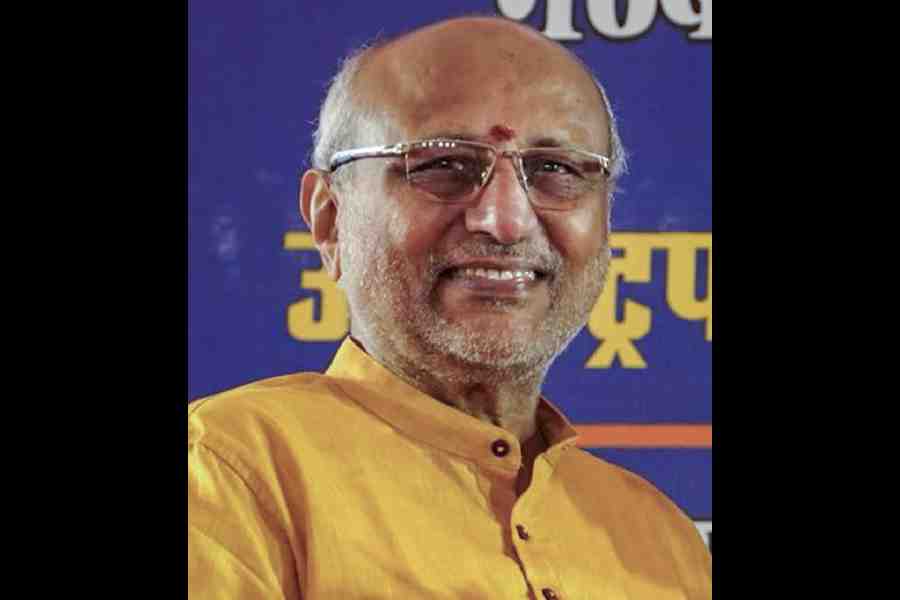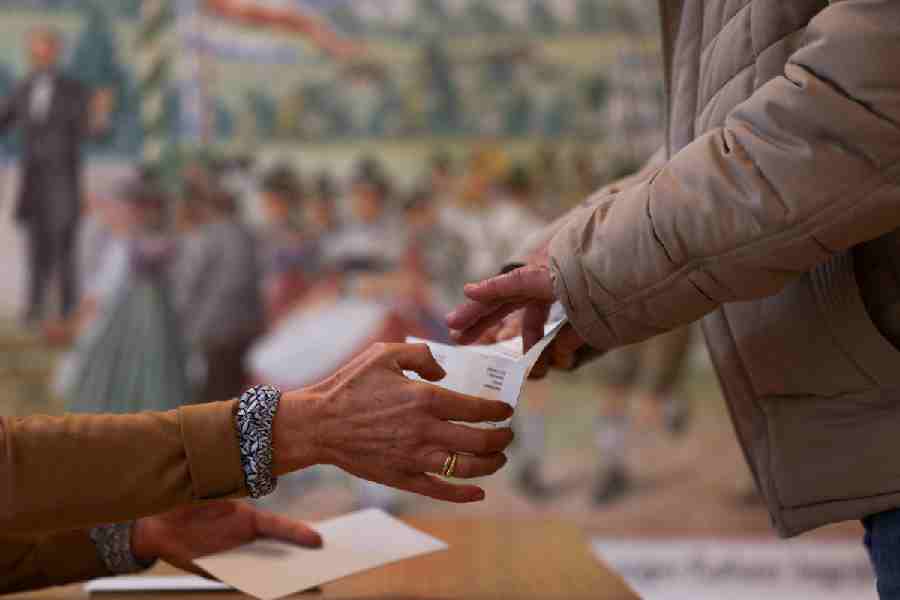 |
| Pop icon: Pande (below) admires ?Madonna?s celebration of the body? |
 |
In some circles, Alka Pande is known as the Queen of Erotica. She may be busy with an exhibition that promotes graphics as an art. The founder-curator of the Visual Arts Gallery at the India Habitat Centre, Pande is also a fine arts professor. And she is a well-known name in Delhi's art circles. Still, for some, she is just another word for titillation.
Her long, trademark earrings are easily recognisable as you enter the tiny office next to the gallery. But Alka Pande is dressed in her work clothes, comprising a no-nonsense shirt and trousers. She?s a far cry from the glamorous backless-bloused lady of her book launch last week, but the attitude is still there. ?I think it is very important to be comfortable with yourself. I?m happy about my age,? says the 47-year-old author who?s gradually making a name with her books on ?sexuality and sensuality?.
?I have my share of detractors. I?ve heard snide remarks like ?So what does Erotica Queen have to say now??? she says. But Pande is not worried, because she also has a huge group of supporters ?starting right with her family members.
Pande, also a prolific writer of Indology and art history, is six books old. What has earned her the label, however, are three of them: a rewritten version of Vatsyayana?s Kama Sutra and a couple of books on Chinese and Indian erotica. She hasn?t named her next book yet. She?s already written it, though. It will be every woman?s personal Kama Sutra, she promises.
Pande?s latest book, Ardhanarishvara The Androgyne, published by Rupa and released last week, is not exactly as erotic as her previous or her forthcoming ones, but then, again, it?s a subject most think is best left alone. The book explores the mostly uncharted territory of the transsexual, and tries to stretch and question one?s perceptions on gender by bringing the all-pervasive presence of the Ardhanarishvara ? the half-man and half-woman god ? into same-sex lovers, transsexuals, eunuchs, cross-dressers and a whole spectrum of the ?others?, as we call them.
Alka Pande calls it her magnum opus. It was actually her doctoral thesis. She has widened the scope of the subject and refashioned it, turning it into a glossy coffee-table book. Pande has delved into the sacred old texts, music, classical dance, traditional art forms, and even films and street plays to establish the prevalence of transvestism in our society. The publishers are touting the book as ?a must-read for those with any genuine interest in the human race?.
But what Pande is interested in is one essential aspect of the human race ? female eroticism. Which is why the Kama Sutra figures as the central theme of her next book. Pande has explored the female part, or the Sutras of the Vatsyayana classic, and tried to dispel the long-serving myth that the book is a guide for men in their teens. According to her, the Kama Sutra has as much to offer women. ?I have already sent the manuscript to the publishers, Brijbasi Art Press,? she says.
She?s treating the text philosophically. ?My book is not about unnatural sexual positions,? she stresses. Obviously, the common perception that she writes about things that titillate readers is something that raises her hackles quite a bit, although she is gradually learning to live with it. She herself is quite derisive about magazine and newspaper articles periodically written about what men and women want, in desperate attempts to boost circulation.
Her book on the Sutras borrows largely from art. In her new book, she has even tried to bring aesthetics out of the profane. ?I have referred to everything, from films to calendar art, to modern-day perceptions in my books,? she explains. She has also infused a bit of spirituality. The enactments of seduction are firmly rooted in India, she says, and there is no reason why we should look to the West to express our sexuality. ?We have everything right here,? she believes.
Art, in a way is Pande?s forte. All her books carry huge pictures of paintings, sculpture, photographs and even regular street art to complement the texts. In fact, the emphasis is more on visuals and their explanations. Tantric diagrams, Mughal paintings, and even advertising graffiti find place.
A post-doctoral fellow in critical art theory from Goldsmiths College, London, and now, the head of the fine arts department of Punjab University, Chandigarh, and visiting professor of the Delhi School of Fine Arts, Pande took recourse to art, music and literature to get her message across in her previous books. In fact, the first book she wrote was about the journey of a Punjabi musician from the mustard fields to the realm of disco lights.
She has moved on to erotica since then. ?I have grown as a person through the work that I have done,? she says. Perhaps the best thing about her interpretations of erotica is that they are done with aesthetics in mind. It is a word that crops up very often in her conversation. In her book on the Sutras, she has taken up the aesthetics of the female body.
?The book is a celebration of the female body,? reveals Pande. Just as with her previous offerings, she has drawn from all kinds of influences for the celebration. She has taken help from the Puranas and the sacred texts. She has explored the body through dance, music, literature, art and even popular culture. ?Look at people like Madonna and how she has celebrated the body,? says Pande. The pop singer?s now out-of-print photographic book, Sex, was one of the greatest hypes of 1990 owing to its graphic content. Amazon.com, referring to the book, calls Madonna the ?most courageous, daring woman of the 20th century?.
Pande, however, has no such pretensions. To her, it?s all about beauty and the sacred feminine. Indian women had always thought sex was a subject best kept under wraps. But Pande thinks it?s time the Indian women took cognisance of their sensuality. ?We are such sensual creatures. At the same time, Indian women are worshipped as goddesses, they are looked upon as mothers. Think of the mother goddess Parvati, and her intense sensuality,? she says.
Pande, however, thinks that social and economic empowerment enable a woman to speak out on issues such as sex. Talking about sex, for instance, was never a taboo with her ? since, she says, the particular class of society she came from gave her a platform. Her husband, a civil servant who lives in Chandigarh, has been extremely supportive of her work. ?I think the fact that I earn is very important, though. Economic independence empowers you,? she says.
Her mother, though, is still a little critical. ?When I was rewriting the Kama Sutra, she asked me why I couldn?t take up some other text,? she laughs. However, her mother is quite proud about Ardhanarishvara, and the fact that her daughter is being talked about these days.
From the female body being looked upon as an adornment for the male to theoretical discourses and art through the ages which give an insight into the ?feminine?, Pande?s book on the woman?s Kama Sutra has them all. Her next project, which will follow the Kama Sutra, is dedicated to the Indian beauty. ?I see that a lot of students in my fine arts class are confused about what is beauty and what isn?t. I?ll try to make the conceptions clear,' she claims.
Pande, clearly, is there to explain conceptions. And quite a few misconceptions as well.










